With the development of technology, car hub units have been widely used in cars. The use and use of hub bearing units is growing and is now in its third generation. The first generation consisted of double row angular contact bearings. The second generation has a flange for fixing the bearing on the outer raceway, which can be simply fixed to the axle by a nut. When the lock nut is installed, the magnitude of the torque varies greatly depending on the type of bearing and the bearing housing, making the maintenance of the vehicle easy. The third-generation hub bearing unit is equipped with a bearing unit and an anti-lock brake system ABS.
For the
wheel bearing equipped with the ABS magnetic thrust ring, in order to determine which side of the thrust ring is mounted, a light and small object can be used to close the edge of the bearing. The magnetic force generated by the bearing will attract it. When installing, point the side with the magnetic thrust ring to the inside, facing the sensitive component of the ABS. Note: Improper installation may result in malfunction of the brake system.
Many wheel bearings are sealed and do not require grease for the entire life of the bearing. Other unsealed bearings such as double row tapered roller bearings must be greased during installation. Because the inner cavity of the bearing is different in size, it is difficult to determine how much grease is added. The most important thing is to ensure that there is grease in the bearing. If the grease is too much, when the bearing rotates, the excess grease will seep out. General experience: When installing, the total amount of grease should account for 50% of the bearing clearance.

 Wheel Bearing
Wheel Bearing is a set of steel balls or rollers held together by a metal ring called a race. They help wheels spin fast with as little friction as possible. View More
Wheel Bearing
Wheel Bearing is a set of steel balls or rollers held together by a metal ring called a race. They help wheels spin fast with as little friction as possible. View More Wheel Bearing Kits
When you need to change the wheel hub bearing,you also need to replace many other parts at the same time,such as hub nut,bolt,seals,split pin,and so on. View More
Wheel Bearing Kits
When you need to change the wheel hub bearing,you also need to replace many other parts at the same time,such as hub nut,bolt,seals,split pin,and so on. View More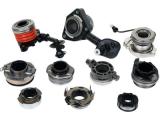 Clutch Release Bearing
Clutch Release Bearing is what presses down on the rotating spring plate or "pressure plate" to release the clutch disk. View More
Clutch Release Bearing
Clutch Release Bearing is what presses down on the rotating spring plate or "pressure plate" to release the clutch disk. View More Belt Tensioner
A Drive Belt Tensioner is a pulley mounted to either a spring mechanism or to an adjustable pivot point that is used to keep constant tension on your serpentine belt. View More
Belt Tensioner
A Drive Belt Tensioner is a pulley mounted to either a spring mechanism or to an adjustable pivot point that is used to keep constant tension on your serpentine belt. View More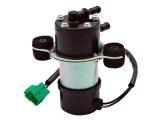 Fuel Pump
AiX provide you with the high quality of electric fuel pump and fuel pump assembly.Fuel pump assembly is one of the vital components of fuel injection system for EFI vehicle. View More
Fuel Pump
AiX provide you with the high quality of electric fuel pump and fuel pump assembly.Fuel pump assembly is one of the vital components of fuel injection system for EFI vehicle. View More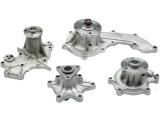 Water Pump
The reliable and effective operation of an automobile engine requires the cooperation of many parts. View More
Water Pump
The reliable and effective operation of an automobile engine requires the cooperation of many parts. View More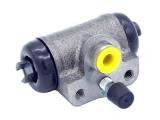 Wheel Brake Cylinder
When you want your car to slow down or stop, you need to take the brake operation. At this point, you need to step down your brake pedal. View More
Wheel Brake Cylinder
When you want your car to slow down or stop, you need to take the brake operation. At this point, you need to step down your brake pedal. View More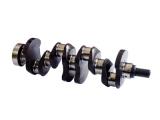 Crankshaft
Crankshaft is also known as crank.It is the important part of an engine to convert the up and down motion of the pistons into horizontal rotation.It is usually made by cast iron or forged steel. View More
Crankshaft
Crankshaft is also known as crank.It is the important part of an engine to convert the up and down motion of the pistons into horizontal rotation.It is usually made by cast iron or forged steel. View More VVT PHASER & OCV
VVT is the abbreviation of Variable Valve Timing. VVT PHASER is the vital component for the VVT engines. View More
VVT PHASER & OCV
VVT is the abbreviation of Variable Valve Timing. VVT PHASER is the vital component for the VVT engines. View More






 +86-18758057736
+86-18758057736 
 TEAM 21,XIEJIA VILLAGE, PUYANG TOWN, XIAOSHAN DISTRICT, Hangzhou, Zhejiang Province, China
TEAM 21,XIEJIA VILLAGE, PUYANG TOWN, XIAOSHAN DISTRICT, Hangzhou, Zhejiang Province, China 